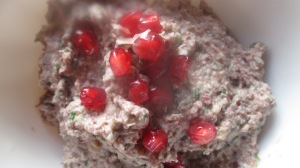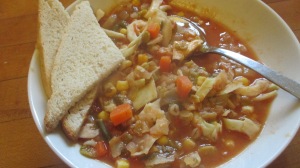
Oh Lupini Beans — happy memories and good times, my college days so many moons ago, in Providence, Rhode Island where a walk down streets of pastel-coloured wooden houses led to a Portuguese grocery store that I loved. And there I discovered jars filled with these salty Lupini beans from which your teeth rip a hole in the skin and you kind of suck the bean out of its rubbery shell into your mouth . (Is that it really? It’s been so long…) Kind of like edamame, though edamame has the salty pod you strip off with your teeth to get those nuggets of baby soybeans that can taste sweet when really fresh.
Something recently brought up a craving for Lupinis (Tremocos in Portuguese), and I began to wonder what they actually are, and whether I could make them. I somehow had imagined them close to fava/ broad beans, though their name should have easily suggested the Lupin family, which I’ve only known as beautiful blue cottage-garden, bee-attracting flowers that I’ve never grown successfully in this country of slugs and snails.
(This is a post I’m writing hypothetically really, as a round-up of the state of knowledge I’ve come to, to share web resources — of which there are not that many — and an invitation to anyone else’s interest, and a request for more information should anyone with experience happen upon this blog…. My interest, as readers know, is looking at global food traditions to widen what we grow locally, around the world, with Climate Weirding etc. in the name of both self-sufficiency and fun and experimental eating.)
Here’s a wonderful and easy Snapguide to how to prepare the salty snacks I enjoy so much. But, searching for hours on the internet I was unable to find the dried beans to order by post in the UK– and from abroad, the postage cost just made the idea prohibitive.

I’m not even sure precisely which lupin species have been used traditionally for food– clarity on this issue would be appreciated. These beans can be toxic, to humans and to livestock, if not prepared correctly, so there seems to be pretty widespread concern to grow low-alkaloid cultivars. Yet, the traditional varieties were prepared with over a week’s soaking in water that was changed pretty frequently, so the toxic alkaloids would be leached out. Hmmmm. If using these beans dried and ground, as for flour, I guess you’d want to either dry the soaked beans, which seems labour and energy intensive, or in that case really seek out the “sweet” varieties. I am signposting this issue as something for further research and understanding. There also seems to be an issue with allergies not being uncommon.
Full of curiosity, I wrote to Alan who writes the really great Scottish Permaculture blog Of Plums and Pignuts.
“Hello!…Can I ask you a question, as someone more interested in cooking/ preparing food than growing …. I’d like to figure out which lupins to grow for the edible seeds that are Lupini Beans/ Tremocos. In your opinion, would any species produce more seeds than others, or be more appropriate or traditional than others? I am aware of the alkaloid toxicity issue… If you have time, I’d love to know what you think. I’ve jumped around the web but haven’t found much really.”
“Hi Annie,” Alan replied. “Thanks for the email. It’s always nice to hear from other people who are interested in this sort of thing. The only lupin I have tried growing for food is Lupinus albus or white lupin, which really didn’t flourish at all [up there in Aberdeen, Scotland], to the extent that I didn’t even get any seeds to try. I understand that Lupinus mutabilis is the best one for eating, having been a staple of the Incan empire, but it isn’t hardy here. Tremocos (Portuguese name)/lupini seem to be Lupinus luteus or yellow lupin. [Somewhere I think I, Annie, read that they come from the blue lupin, Lupinus angustifolius— my memory could be faulty but it nags.]
The most productive lupin in this country is certainly the garden lupin, which is Lupinus polyphyllus. Unfortunately its seeds have very high levels of alkaloids. There are cultivars that I would like to try some day that have been bred for sweetness. Lupinus perennis and Lupinus nootkatensis also look like they would be hardy and might be worth trying.
I haven’t experimented much with lupins as in general they seem to be fiddly and take a lot of preparation. In addition the best ones for eating are often annual, which means that you lose much of what attracts me to the group in the first place. From what I’ve read, they seem to be eaten rather like edamame, but since I can get moderate crops of soya beans here I might be best sticking with them. Good luck with your experiments.”
Thank you Alan for that useful information! It also seems like the countries that have a history of eating lupin seeds are warmer and have longer and drier growing seasons than we have had in the UK….
Well, as I’m just putting this all out there in the webosphere as something of interest, here are some links I’ve found that might be helpful
On the Andean lupin
Plants for a Future (for one species, and there are others on their database)
A good Permaculture website
and for a Canadian experience with growing lupins for food.

Illustration from Wikipedia Commons

















